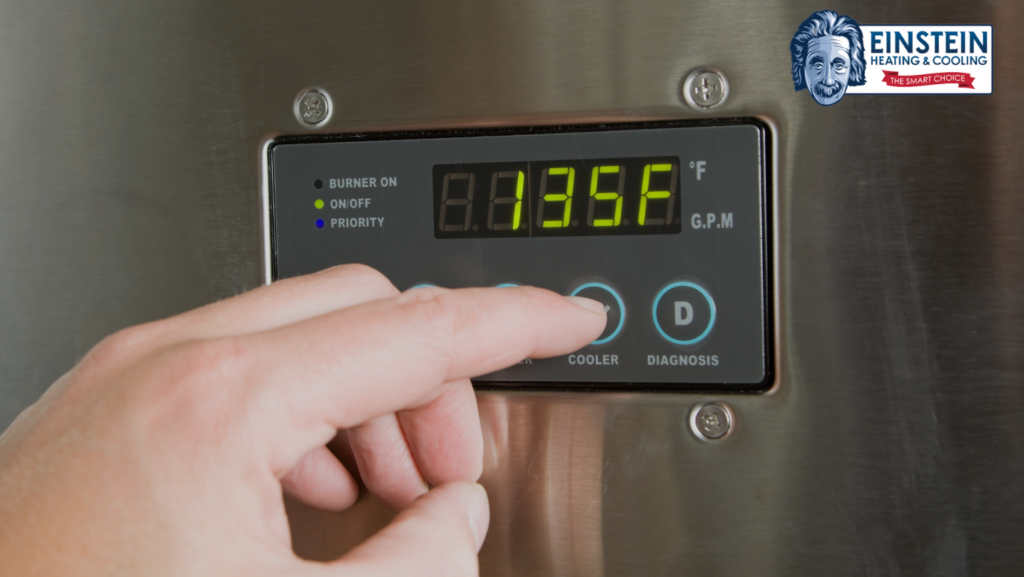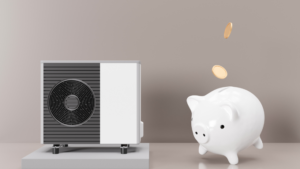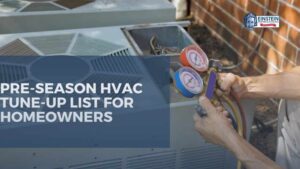The pursuit of energy efficiency and a continuous supply of hot water has led many Bend residents to choose tankless water heaters. With this step-by-step guide, you’ll gain a thorough understanding of the installation process, from selecting the right location and preparing for the installation to connecting the water and gas lines, ensuring proper ventilation, and conducting essential safety checks. Whether you’re replacing an old system or upgrading to a tankless water heater for the first time, this guide will empower you to make the most of this efficient and innovative addition to your Bend home’s HVAC system.
1. Benefits of a Tankless Water Heater
Installing a tankless water heater, often referred to as an on-demand water heater, in your Bend home offers a multitude of advantages, making it a smart choice for homeowners seeking energy efficiency and convenience. Here’s an in-depth exploration of the benefits:
Energy Efficiency: Tankless water heaters stand out for their exceptional energy efficiency. Unlike traditional water heaters that maintain a constant temperature in a large tank, tankless units heat water on demand. This means you’ll no longer waste energy keeping a reservoir of hot water at the ready. Instead, the tankless system activates only when you turn on a hot water tap or appliance, ensuring that you consume energy precisely when necessary. This energy-conscious approach can significantly reduce your utility bills over time.
Space Savings: The space-saving design of tankless water heaters is a real game-changer for homeowners with limited square footage. Unlike their tank-equipped counterparts, tankless units are compact and can be conveniently wall-mounted. This compact design not only frees up valuable storage space but also allows for flexible installation in smaller areas such as closets or utility rooms. This space efficiency is particularly valuable for homes where every inch counts.
Endless Hot Water: One of the most celebrated features of tankless water heaters is their ability to provide an uninterrupted supply of hot water. Traditional water heaters have a finite capacity, meaning that once the tank is emptied, you must wait for it to refill and reheat the water. With a tankless system, there’s no need to worry about running out of hot water, even during extended showers or when multiple hot water appliances are in use simultaneously. This ensures a continuous stream of hot water for your bathing, cleaning, and other needs.
Reduced Risk of Water Damage: Traditional water heaters, with their large water storage tanks, can be prone to leaks and ruptures, which may lead to extensive water damage in your home. Tankless water heaters, on the other hand, don’t store large quantities of water. This significantly reduces the risk of water damage caused by tank failure or leaks. Additionally, because tankless units are typically wall-mounted and have fewer components, the potential points of failure are minimized, further enhancing the safety of your water heating system.
Longevity: Tankless water heaters are known for their impressive lifespan. With proper maintenance, these units can last well over 20 years, outperforming many traditional water heaters. This long-term durability not only provides an extended return on your investment but also reduces the frequency of replacements and associated costs. Additionally, many tankless water heaters come with warranties that cover parts and labor for several years, offering added peace of mind.
2. Safety Precautions
Ensuring safety during the installation of a tankless water heater is paramount. Here are some essential safety precautions to keep in mind:
Gas and Water Shut-off: Before initiating any work, it is crucial to turn off the gas and water supply to the installation area. This precaution prevents potential gas leaks or water-related mishaps during the installation process. Be sure to identify and utilize the appropriate shut-off valves for both gas and water.
Safety Gear: Always prioritize your safety by wearing the necessary safety gear. This should include gloves to protect your hands and safety goggles to shield your eyes from any debris or particles that may be released during the installation. Safety gear reduces the risk of accidents and injury during the installation process.
Ventilation: Working in a well-ventilated area is essential when dealing with gas appliances like tankless water heaters. Proper ventilation helps disperse any gas fumes that may be released during installation, reducing the risk of inhalation. Make sure that doors and windows are open, and consider using fans to enhance airflow.
Follow Manufacturer’s Instructions: Every tankless water heater model may have specific installation requirements and safety guidelines outlined in the manufacturer’s instructions. It is imperative to meticulously follow these guidelines to ensure that the unit operates safely and efficiently. Failure to adhere to the manufacturer’s instructions may not only compromise the performance of the tankless water heater but also pose safety risks. It’s crucial to read and understand these instructions before proceeding with the installation. If in doubt, seek professional assistance or consult a qualified HVAC technician to ensure proper installation and safety compliance.
3. Tools and Materials You’ll Need
As you prepare to embark on the installation of a tankless water heater, having the right tools and materials at your disposal is crucial for a smooth and successful installation process. Here is an extensive list of the tools and materials you will need:
Tools:
- Pipe Wrench: A pipe wrench is an essential tool for tightening and loosening threaded connections on the gas and water lines. It provides a secure grip and ensures leak-free connections.
- Adjustable Wrench: An adjustable wrench is versatile and is used for various applications during the installation. It allows you to adjust the jaw size to fit different nuts and bolts, making it a valuable tool for tightening and loosening connections.
- Screwdrivers: Screwdrivers come in handy for securing electrical connections and fastening various components during the installation. Both flathead and Phillips-head screwdrivers may be required, so having a set of both is advisable.
- Pipe Cutter: A pipe cutter is essential for cutting the gas and water lines to the required length. It ensures clean, precise cuts, which are crucial for accurate and secure connections.
- Gas Tape: Gas tape, also known as Teflon tape or thread seal tape, is used to seal threaded connections to prevent gas leaks. It is a critical component in ensuring the integrity of gas line connections.
Materials:
- Pipe Fittings: You’ll need various pipe fittings, such as couplings, elbows, and tees, to create a plumbing system that connects the tankless water heater to the gas and water supply lines. These fittings ensure proper flow and distribution of gas and water.
- Sediment Filter: A sediment filter is an important component for maintaining water quality and protecting the tankless water heater from potential damage caused by debris and sediment in the water supply. It should be installed on the incoming water line to the unit.
- Vent Pipes: Vent pipes are used in the exhaust and ventilation system of the tankless water heater. They carry combustion byproducts, such as carbon monoxide, out of your home safely. Vent pipes should comply with local building codes and manufacturer guidelines to ensure safety.
- Gas Line: The gas line is an integral part of the installation. It carries natural gas or propane to the tankless water heater for combustion. It’s important to use the appropriate size and type of gas line to ensure the unit receives the required gas supply.
- Electrical Connections: Tankless water heaters may require electrical connections for ignition and control systems. Ensure you have the necessary wiring and connectors to provide power to the unit.
- Safety Valve: A pressure relief valve is a safety device that protects the tankless water heater from excessive pressure. It should be installed on the hot water outlet to prevent over-pressurization.
- Tankless Water Heater: Of course, you’ll need the tankless water heater unit itself. Make sure you have the specific model designed for your needs and that it complies with local regulations and safety standards.
Having these tools and materials on hand before you start the installation process ensures that you’ll have everything you need to complete the project efficiently and correctly. Additionally, it minimizes interruptions and saves time, making the installation smoother and more manageable. If you’re unsure about the compatibility of specific materials or the correct tools to use, consult the manufacturer’s instructions or seek advice from a qualified HVAC technician.

4. Steps for Installation
Installing a tankless water heater is a multi-step process that involves careful planning and precise execution. Below is a detailed expansion of each step to ensure a successful and safe installation:
Determine the Location:
- Begin by selecting a suitable location for your tankless water heater. Consider factors such as accessibility to gas and water lines, adequate ventilation, and adherence to local building codes.
- The chosen location should allow for easy access for maintenance and any required repairs in the future. Proper ventilation is critical to expel combustion byproducts safely. Ensure that the unit will be installed in an area that complies with safety guidelines.
Prepare for Installation:
- Clear the designated installation area by removing any obstructions, tools, or materials that may hinder the installation process.
- If you’re replacing an old water heater, take the time to safely disconnect and remove it from the installation area. Be vigilant in turning off the gas and water supply and make sure to follow safety guidelines.
- After removing the old unit, thoroughly clean the area to ensure a clean and safe space for the new tankless water heater. Removing debris and dust is essential for efficient and hazard-free operation.
Disconnect the Old Water Heater:
- Safely disconnect the old water heater by turning off the gas supply and closing the water shut-off valve. This step is crucial to prevent any gas leaks or water damage during the removal process.
- Carefully remove the old unit, ensuring that you don’t cause any damage to the surrounding area or create leaks in the gas or water lines. Take precautions to handle the old water heater properly, especially if it’s bulky and heavy.
Install New Ventilation:
- Proper installation of the ventilation and exhaust system is vital to ensure the safe operation of your tankless water heater. These systems are designed to remove combustion byproducts, such as carbon monoxide, from your home.
- Follow manufacturer guidelines and local building codes when setting up the ventilation and exhaust system. This may involve installing vent pipes, ducts, and proper sealing to ensure that gases are safely expelled.
Mount the Tankless Water Heater:
- Secure the tankless water heater to the wall using the mounting brackets provided by the manufacturer. Ensure that the unit is level and securely attached to the wall to prevent any movement or potential damage.
Connect Water and Gas Lines:
- Carefully connect the water and gas lines to the tankless water heater. Use appropriate fittings and tools to ensure that connections are tight and leak-free.
- Gas tape can be employed to seal threaded gas line connections, preventing any gas leaks.
Install a Sediment Filter:
- Attach a sediment filter to the incoming water line that feeds the tankless water heater. This filter prevents debris and sediment from entering the unit, which can prolong its operational life and maintain efficient operation.
Ventilation and Exhaust System:
- Ensure the proper installation of the ventilation and exhaust system continues. This includes connecting and sealing vent pipes and ensuring that they are directed according to manufacturer specifications and local building codes. Proper venting is crucial for safety and compliance.
Electrical Connections:
- Connect the tankless water heater to the electrical supply following the manufacturer’s instructions. Ensure that the unit receives the correct voltage and is properly grounded to prevent electrical hazards.
Water Line Connections:
- Connect the hot and cold water lines to the unit, making sure they are appropriately insulated. Proper insulation helps maintain water temperature and prevents heat loss.
Safety Valve Installation:
- Install a pressure relief valve and an expansion tank if required. These safety components are essential to prevent over-pressurization and to maintain the safety and proper functioning of your tankless water heater.
Turn on the Tankless Water Heater:
- After completing all the connections and ensuring that everything is secure, turn on the tankless water heater following the manufacturer’s instructions. Carefully inspect for any gas or water leaks during this initial start-up. Set the desired temperature and check the system’s performance.
5. Testing and Troubleshooting
Testing:
- With the installation complete, it’s crucial to conduct comprehensive testing to ensure that the tankless water heater is functioning correctly. Test the system by running hot water at various fixtures to verify a consistent hot water supply. Monitor the temperature to ensure it aligns with your desired setting. Listen for any unusual noises or vibrations during operation.
- Inspect all gas and water connections thoroughly to check for leaks, as even small leaks can lead to significant problems. A meticulous examination can prevent safety hazards and water damage in your home.
Troubleshooting:
- If any issues or irregularities are detected during testing, refer to the troubleshooting section in the manufacturer’s manual for guidance. Address any problems promptly, and if necessary, consult a professional technician to resolve complex issues and ensure the system’s optimal performance.
6. Maintenance Tips
Periodic Descaling:
- Over time, mineral deposits may accumulate inside the tankless water heater, which can reduce its efficiency. Periodic descaling is necessary to remove these deposits. Follow the manufacturer’s recommendations for the descaling process, which may involve flushing the system with a descaling solution.
Leak Inspection and Repair:
- Regularly check for and repair any leaks in the gas or water lines. Leaks can lead to inefficiency and potential safety hazards. Prompt repair is essential to maintain the system’s performance.
Sediment Filter Maintenance:
- Clean or replace the sediment filter as needed to ensure it continues to effectively remove debris and sediment from the incoming water supply. A clogged filter can impede water flow and lead to decreased efficiency.
Scheduled Professional Maintenance:
- To ensure the long-term efficiency and safety of your tankless water heater, consider scheduling regular professional maintenance. A qualified technician can inspect the unit, make any necessary adjustments, and address any potential issues before they become major problems. This proactive approach helps extend the life of your system and ensures that it operates optimally.
By following these steps for installation, conducting thorough testing, and adhering to a maintenance routine, you can enjoy the benefits of a tankless water heater while ensuring its safe and efficient operation in your Bend home.
Choose Einstein Heating and Cooling for Your Tankless Water Heater and HVAC Needs
Einstein Heating and Cooling is the intelligent choice for all your HVAC needs, including tankless water heater installation and maintenance, across specific states in the US, including Oregon. Our team of highly skilled and experienced professionals is dedicated to providing top-notch service and tailored solutions that cater to your home’s unique requirements. Whether you’re considering the upgrade to a tankless water heater for more energy-efficient hot water or need assistance with your existing HVAC system, we’ve got you covered. Our commitment to excellence ensures that you receive the most efficient, cost-effective, and environmentally friendly solutions. Einstein Heating and Cooling is the trusted name for residents seeking comfort, reliability, and innovation in their HVAC systems in these states. Make the intelligent choice and partner with us for all your HVAC needs.








